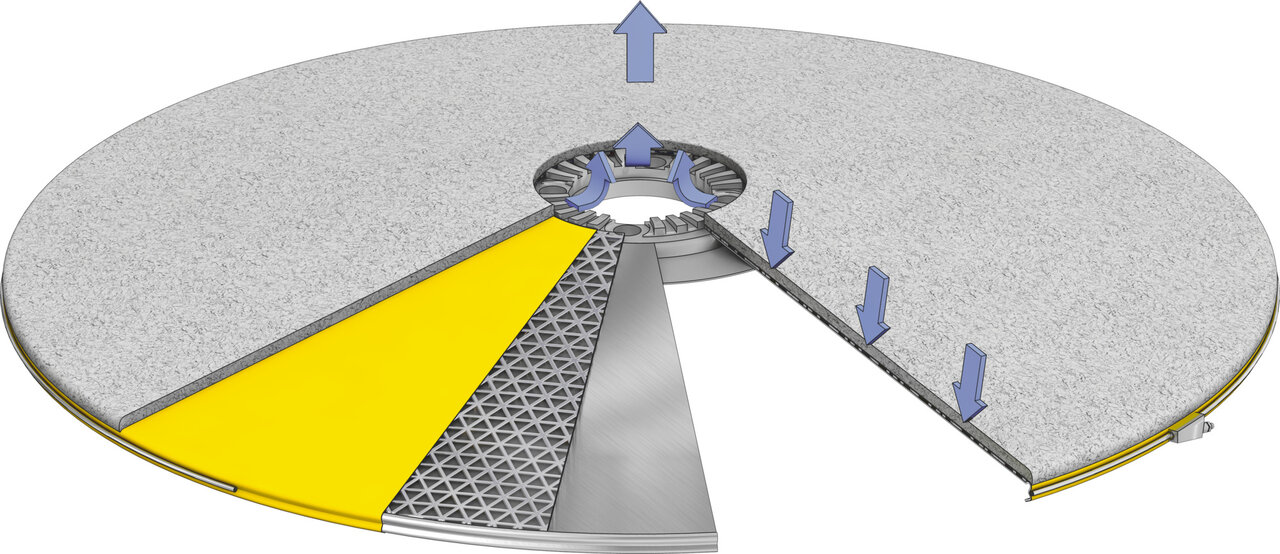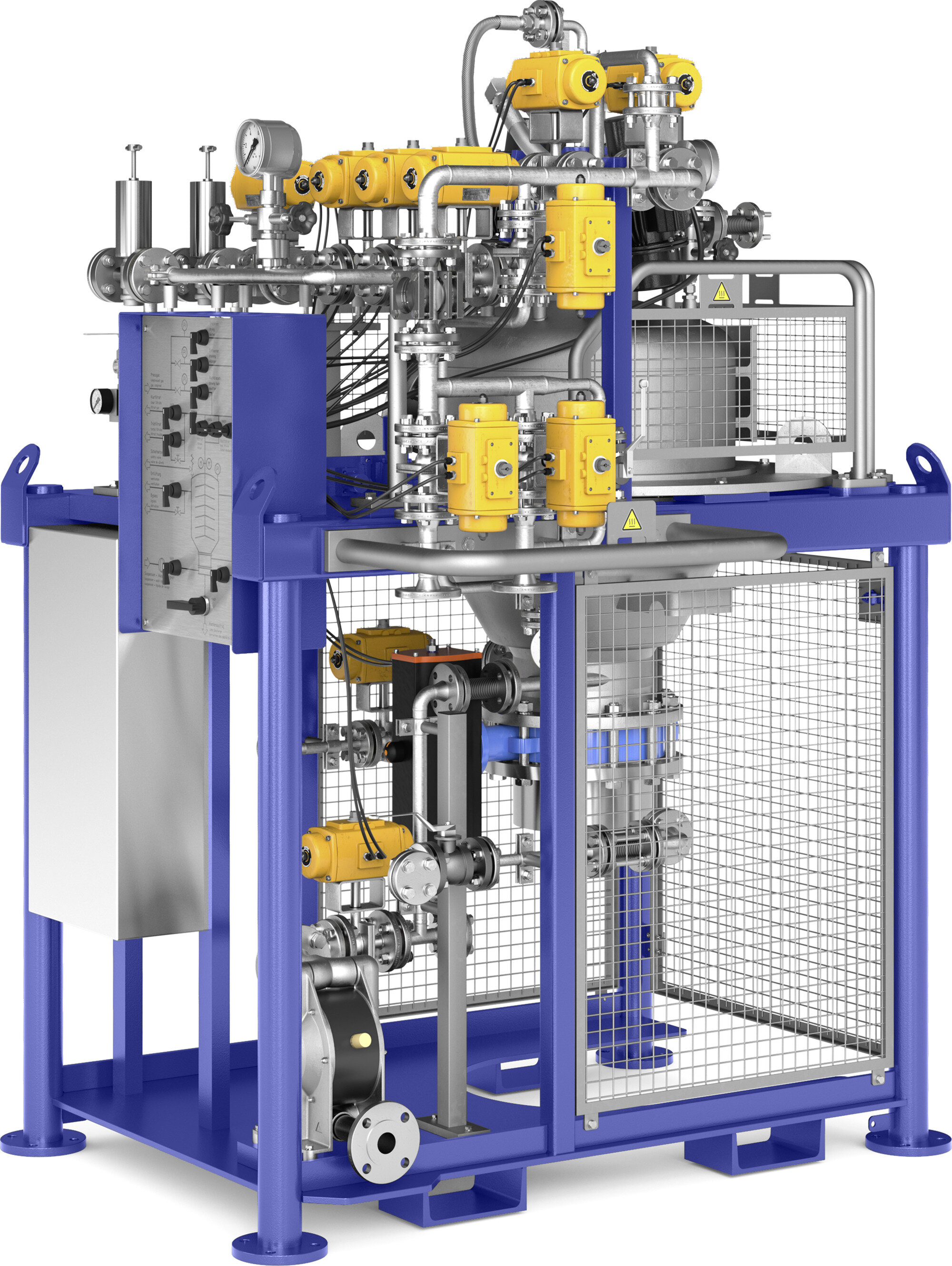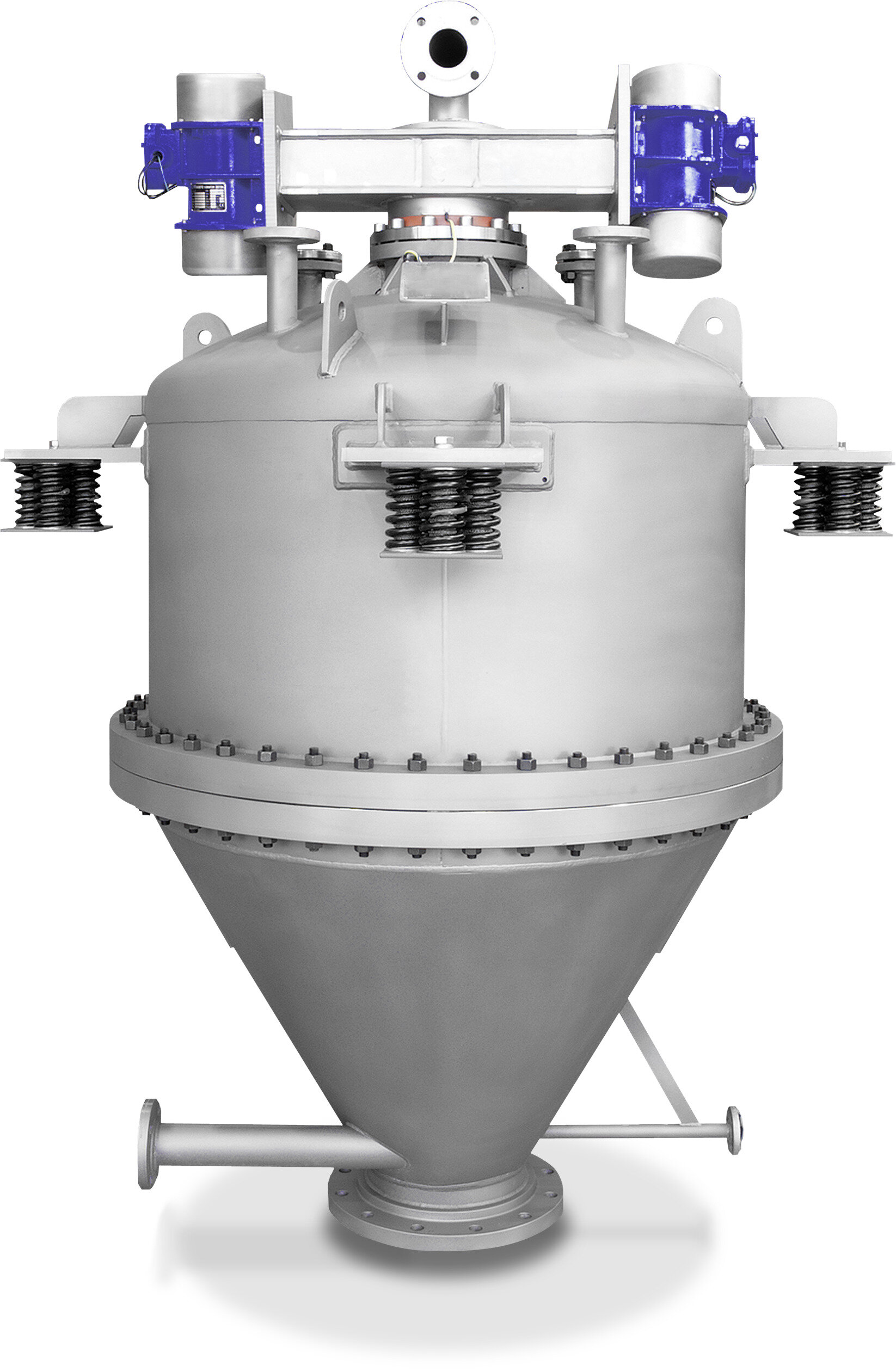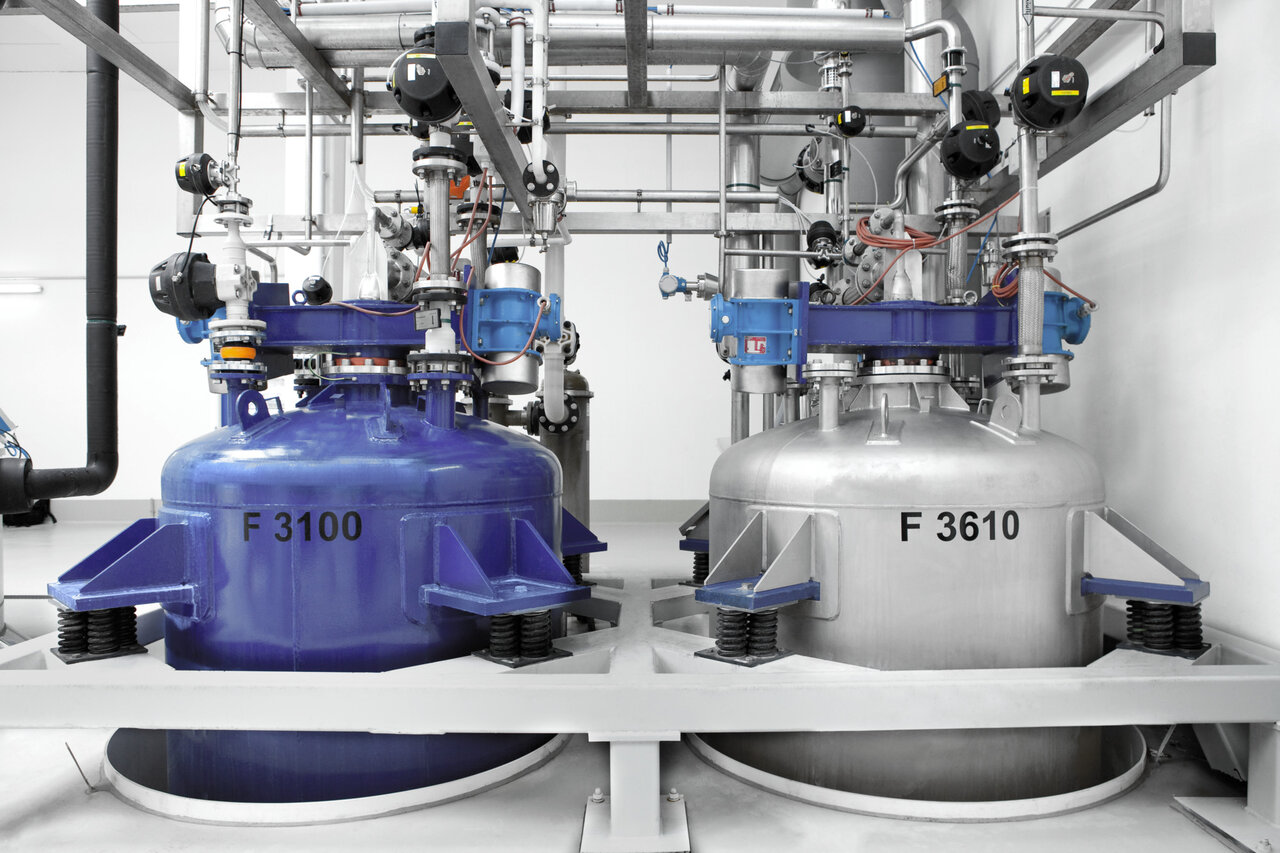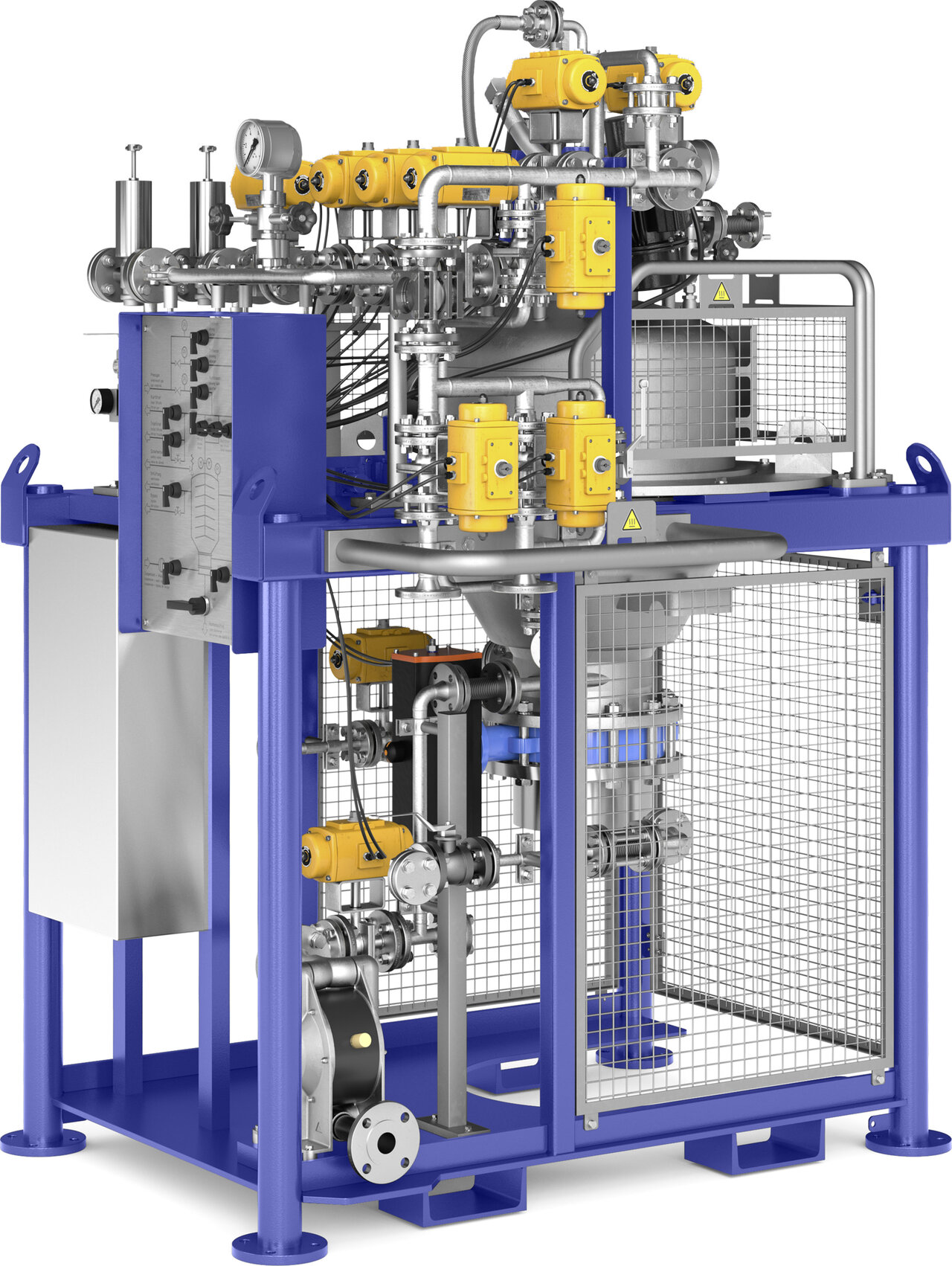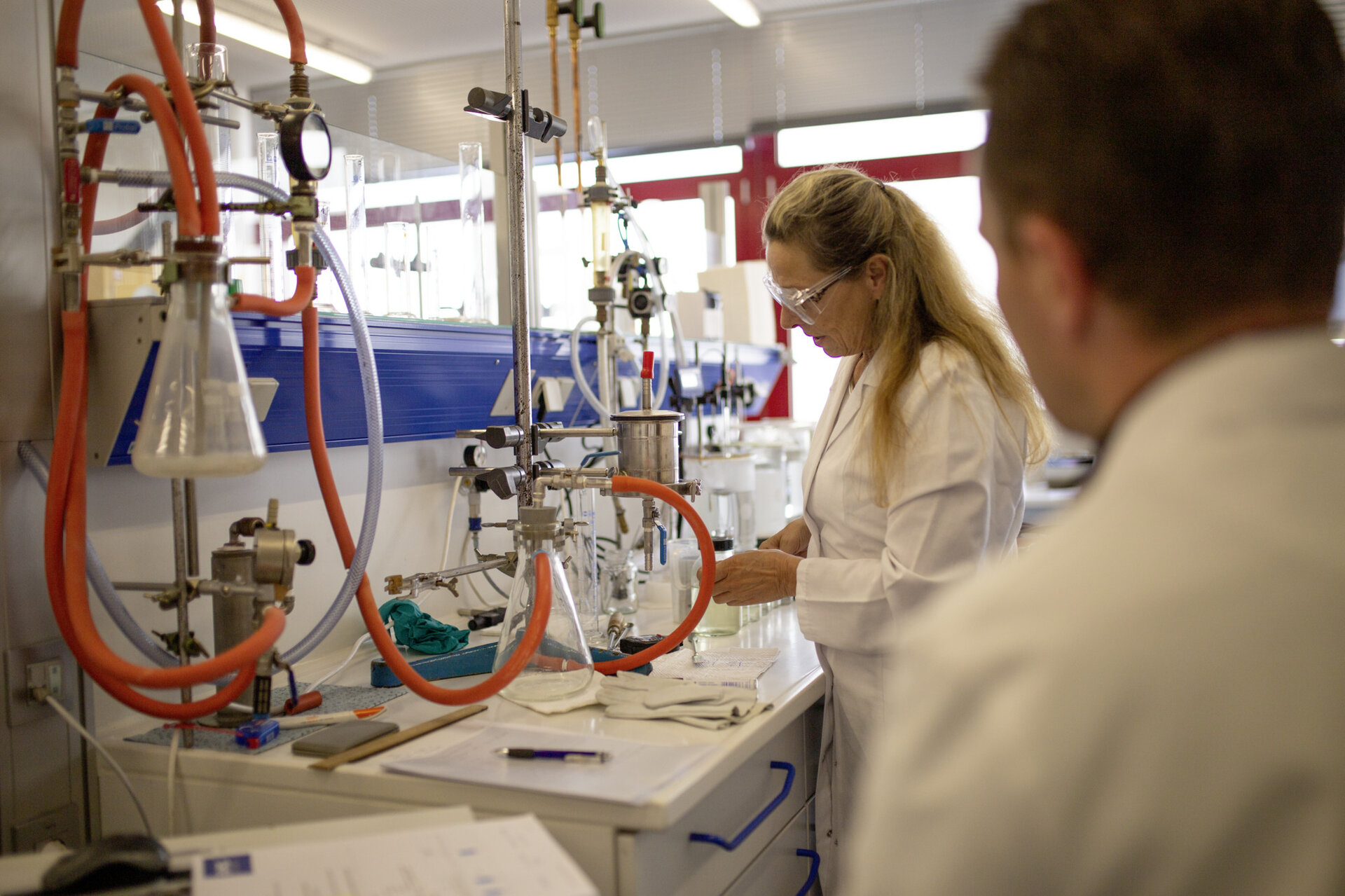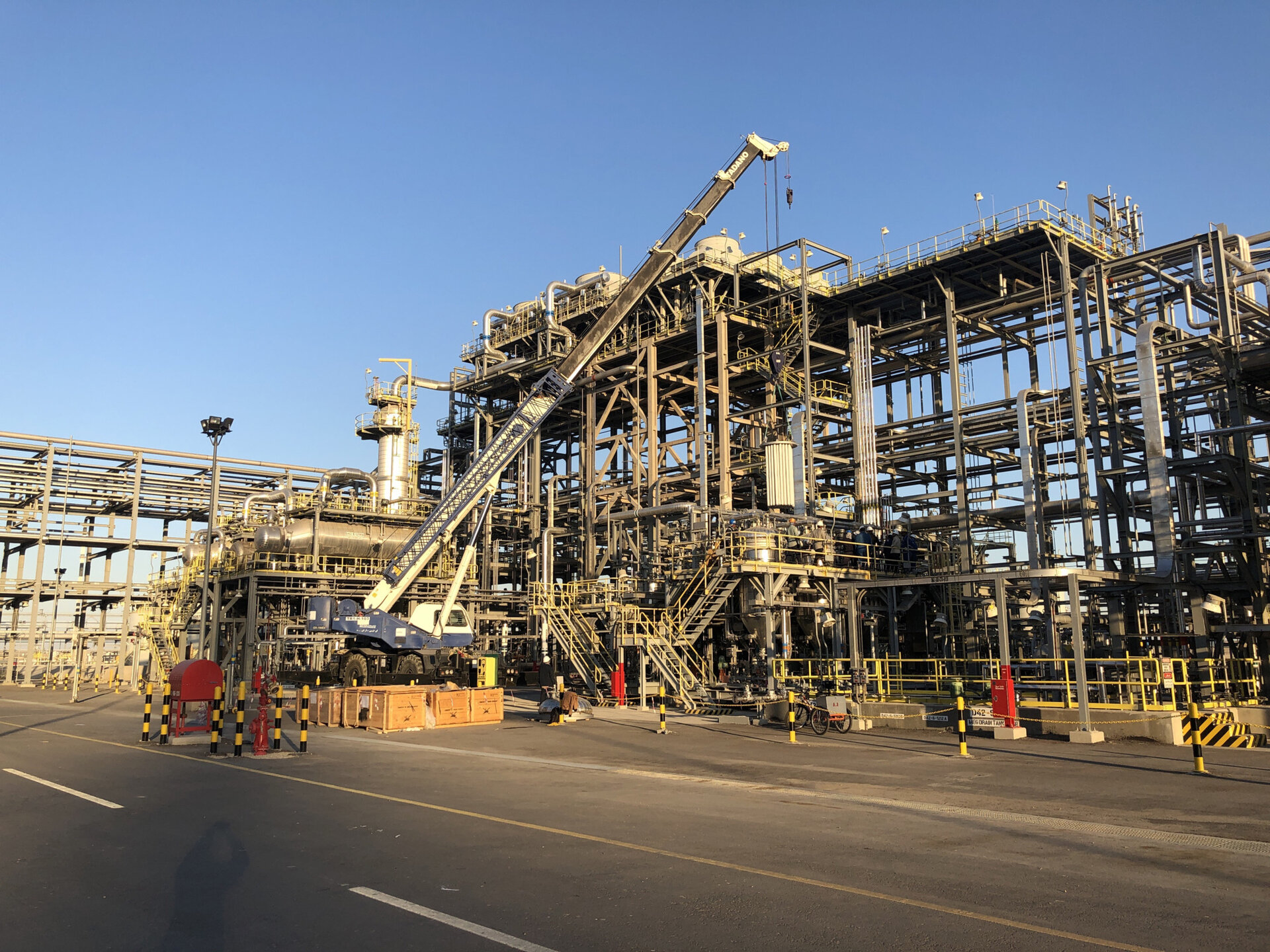
Pressure plate filter

Pressure plate filter
The pressure plate filter of type PF is a filter that operates in a discontinuous manner. The plate-shaped filter elements are arranged as a plate stack in a pressure vessel. The process steps typically performed with this unit are filtration, washing, drying and discharge. All these steps take place under pressure.
The filter is used primarily for cake-forming solid-liquid separation of suspensions with a low solids content that are moderately or very difficult to filter. It is also suitable for adsorptive filtration (as a deep bed or precoat filter). The pressure plate filter is frequently used for clarifying filtration. It is a compact unit, operates fully automatically and delivers high throughput rates.
Highlights
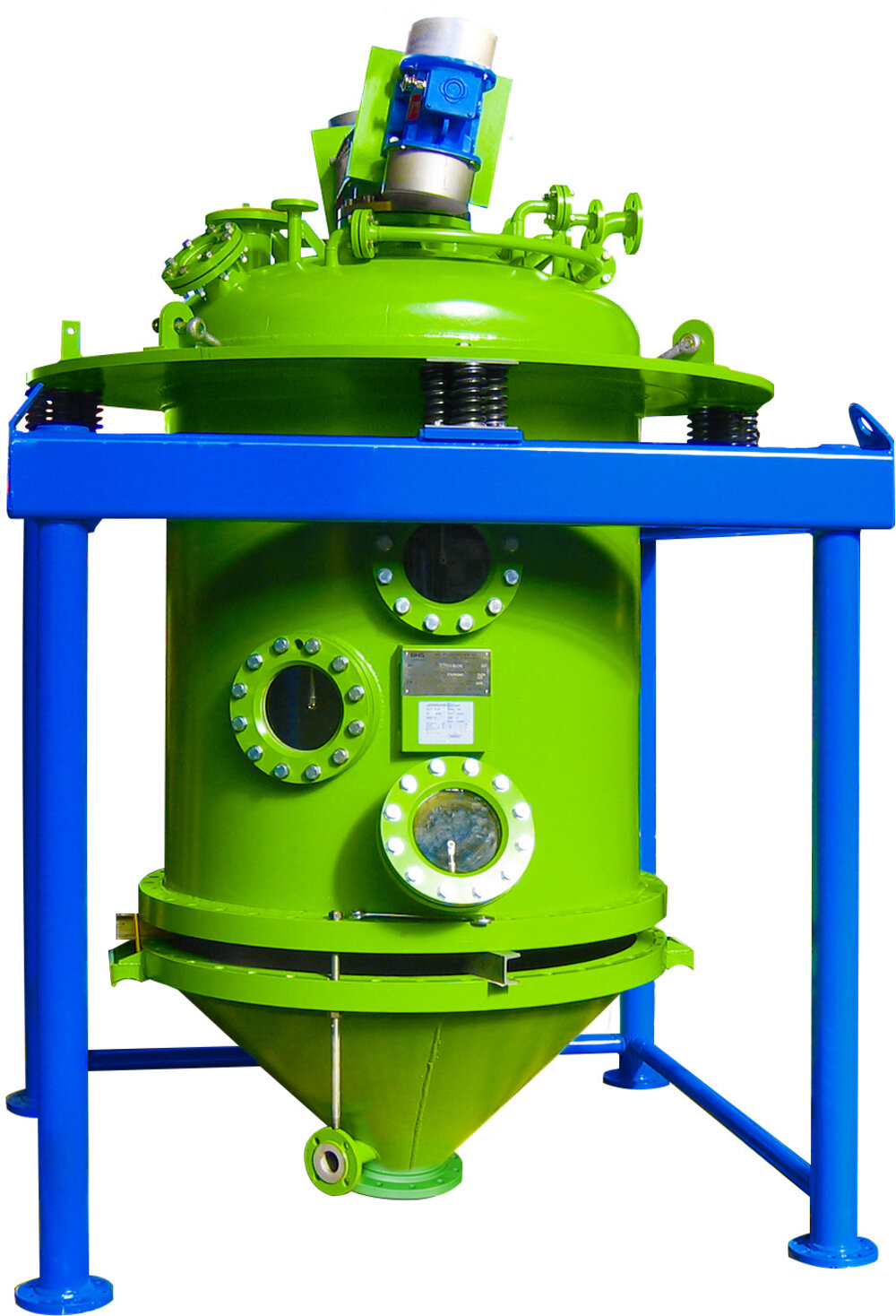
Versatile technology solutions
In order to meet the respective process engineering requirements, the filter cake can be treated in many ways. It can be washed once or several times. To achieve further dehumidification of the filter cake, it is possible to pass air, nitrogen or other gases through it. If necessary, precoat filtration can be performed using filter aids.
Vibration discharge
The filter cake can be discharged either as sludge or dry matter. The whole plate array, including the hollow shaft and drive head, is mounted elastically on an elastomer ring that does not come into contact with the product. The entire array is set into defined rotary and vertical vibrations by means of two unbalanced motors. This causes the filter cake to tear open and fall from the filter plate in a spiral pattern.
Safe pressure filtration system
The entire filtration process takes place under pressure – up to a differential pressure of 10 bar g – in a closed, gas-tight system. This enables the use of BHS pressure plate filter even under stringent safety or hygienic requirements. Products can also be processed in an inert or sterile atmosphere. Sealing of the filter vessel against the vibrating plate array is achieved by means of a static sealing sleeve made of elastomer or PTFE.
Fully automatic operation
The pressure plate filter works fully automatically. At the end of a process cycle, the filter cake is ejected through vibration of the plate array. After the cake is discharged, the next cycle commences.
GMP and ATEX
We produce special-purpose filters according to GMP principles and equipped with CIP units, where necessary, for applications in the pharmaceutical, food and bioprocess industries. We are also ATEX certified.
Modular turnkey
filtration systems BHS has developed a modular system of turnkey filtration plants using pressure plate filters. The advantages of these proven system solutions include short delivery times and low installation costs on site. The modules are designed to facilitate transport to the construction site in ISO containers at low cost.
Energy efficiency and low maintenance requirements
Vibration motors with low drive power (0.3 to 2 kW depending on size) are sufficient to affect the cake discharge. This is an advantage over alternative designs, which might require more energy to generate a rotary motion of the plate array. Furthermore, there is no longer any need for a complicated and sealed shaft system that traverses the pressure vessel. The uncomplicated design leads to savings in energy and maintenance costs.
Technical systems

Plate array and cake formation
The individual filter plates comprise slightly conical stainless steel discs. A coarse-meshed supporting fabric covers the surface. It serves as a support for the actual filter fabric. The filter cake builds up on the filter fabric. Due to the applied pressure difference, the clear filtrate flows into the area of the supporting fabric and on to the central collection pipe. The plates are connected to one another by means of specially toothed connecting hubs, which are tightened positively via tie rods. The filter fabric is attached to the hub seal on the shaft side and to the plate edge via a clamping ring.
Shaft seal
The hollow shaft of the BHS pressure plate filter is sealed toward the pressure vessel by a static, radially acting sealing sleeve. Compared to dynamic solutions, this static sealing of the processing space offers a very high level of plant safety even under demanding operating conditions.
Residue-free filtration
After a filtration cycle, the residual volume in the lower part of the tank is pressed down via the tank discharge pipe using compressed gas. Additional filter plates with reduced diameters can be used to reduce the residual volume in the tank cone. An additional filter cylinder can be flanged to the lower end of the tank to affect almost complete residual filtration.

Filtration
The solid matter accumulates as a filter cake on the surface of the slightly conical plates due to the pressure difference applied during the filtration cycle. The filtrate is discharged through the support fabric, the plate hub and the hollow shaft (blue arrow).
Cake washing
Displacement or circulation washing can be implemented in the direction of the filtration.
Cake discharge
At the end of the process cycle, the discharge flap opens. The filter cake is present on the filter plates. The plate array is set into defined vertical and horizontal oscillations by unbalance motors. Spring isolators on the casing prevent the vibrations from being transmitted to the foundation. In addition, the filtrate is blown back with slight overpressure (orange arrow). The filter cake on the plates tears open, and individual fragments move to the edge of the plate. From there the filter cake falls into the conical container and is discharged through the discharge flap.
Cake drying
Mechanical cake drying is implemented by blowing gas or steam through the filter cake. The exhaust air flows through the hollow shaft and upwards through the filtrate tube. Alternatively, the cake can be discharged as sludge.
Systems
Plate filter systems

Plate filter systems
BHS manufactures pressure plate filters and corresponding systems for a wide range of applications. The offering is based on a range of standardized modules for plants with filter surfaces from 0.33 m² to 45 m². BHS also manufactures individual filter plants tailor-made according to customer specifications.
The BHS plate filter system comprises the following four main components:
- Pressure plate filter
- Piping with fittings and measuring instruments
- Steel structure
- Control unit
There are additional accessories to further supplement and expand the system.
Accessories
Process solution
In addition to machine technology, BHS also offers complete process engineering solutions in the field of solid-liquid separation. The actual filtration can be supplemented by upstream and downstream process steps, which we plan and implement.
Modular design
All BHS plate filter systems feature a modular design. This reduces the planning effort, allows for factory pre-assembly and facilitates detailed testing before delivery (FAT). On-site installation is accelerated and short delivery times are generally possible. Depending on the technical process requirements, the modules can be combined flexibly.
ISO containerization
The modules installed in the systems fit into ISO containers. This enables cost-effective and hassle-free transport worldwide.
Interfaces
It is part of our standard project planning protocol to fully clarify all interfaces early on. For this purpose, we draft foundation plans and detailed piping isometrics. All connection points are clearly defined.
Documentation
BHS has extensive experience in the preparation of plant documentation in compliance with international standards.
Designs
Residual filtration device
Residual filtration devices are used to process the residual volume at the end of the filtration cycle via an internally filtering cylinder on the tank cone. In this way, complete residual filtration can be achieved while minimizing the expenditure of compressed gas.
Precoat or body feed system
In certain cases, a precoat or body feed system is required. These are required to stir powdery filter aids into a suspension. The precoat system works in batches, whereas the body feed system operates continuously. BHS provides the precoat or body feed system, including storage tank, pumps, agitator, automatic loading etc., as a fully integrated filter system.
Additional accessories
To match your application needs, we offer to integrate other accessories into the plate filter systems, such as police filters or activated carbon filters.
Technical specifications
Performance data and dimensions
| Type | Plate diameter | Filter area/plate | Number of plates | Active filter area | Vessel diameter |
|---|---|---|---|---|---|
| PF 04 | 400 mm | 0,11 m² | 3 - 6 | 0,33 - 0,67 m² | 550 mm |
| PF 07 | 760 mm | 0,42 m² | 4 - 15 | 1,7 - 6,3 m² | 1.000 mm |
| PF 10 | 1.010 mm | 0,78 m² | 7 - 30 | 5,5 - 23,4 m² | 1.300 mm |
| PF 14 | 1.440 mm | 1,5 m² | 16 - 30 | 24 - 45 m² | 1.800 mm |
All specifications apply to the standard version.
Technical data for customized designs may differ from the specified data.
All technical data may change due to development.
Subject to modification without notice.
Operating criteria
| Operating method | intermittent |
|---|---|
| Operating pressure | up to 10 bar (g) |
| Operating temperature | up to 250 °C |
| Solids content (suspension) | up to 10 % (by weight) |
| Cake thickness | up to 60 mm |
| Grain size | from 0,5 µm |
| Filter output - suspension | up to 4 m³/m² h |
| Filter output - dry solids | - |
| Active filter surface | 0,35 - 45 m² |


